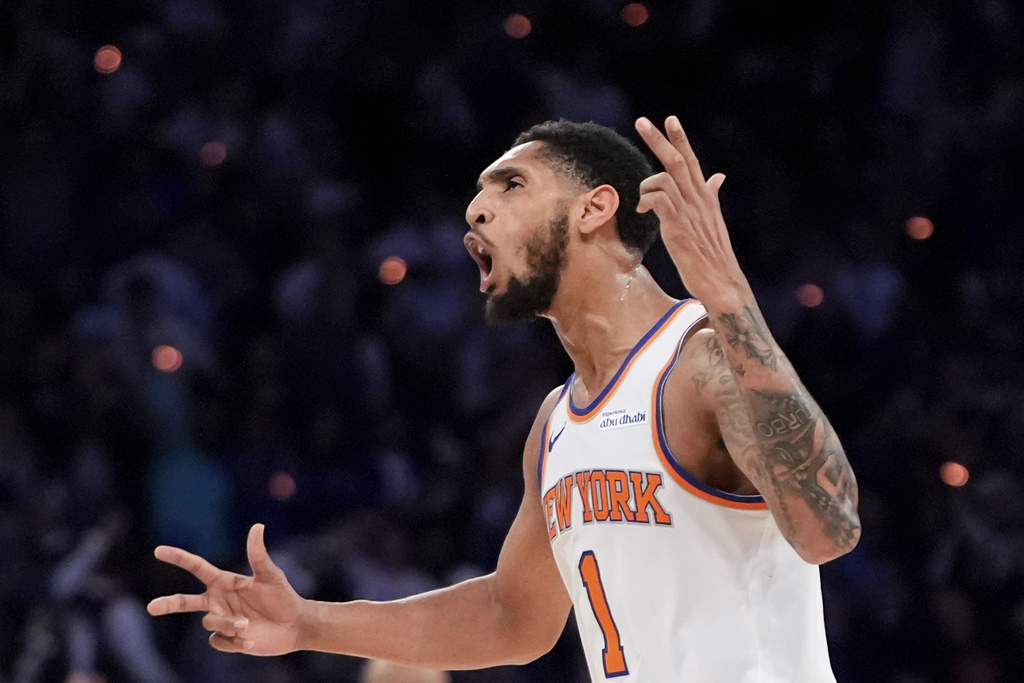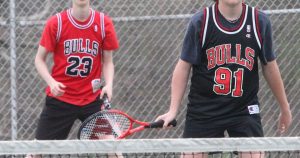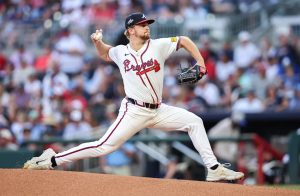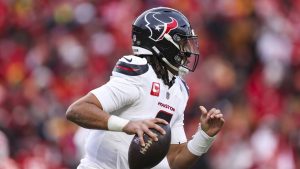The ball barely touched his hands. The defense barely had time to react. But the shot was already up — and already good.
Cameron Payne didn’t log a single minute in the first quarter of Game 1 between the Knicks and Pistons. Seven seconds into the second? He was already on the board. Three points courtesy of a defense that forgot what time it was: Turbo Time.
That’s the thing about Payne. You don’t ease into his rhythm. You either catch up or you get burned. He doesn’t warm up into games — he enters them already on fire.
It happened again in the fourth quarter of Game 1, just when it looked like Detroit was poised to steal one on the road. Payne had gone the entire third without even a shot attempt. But once he re-entered the game, the fuse was lit.
Layup. And-one. Three. Step-back three. All in the blink of an eye — all part of an 11-point outburst in three minutes and change that helped trigger a 21-0 Knicks run and slam the door shut on Game 1.
A shot most players would call a heat check? For Payne, that’s just a regular Tuesday.
“Turbo’s been that all year for us,” Karl-Anthony Towns said. “He’s been great for us every time we’ve needed him either when JB went down or gets hurt. Cam has always stepped in as an integral part of our team and finding ways for us to be successful.”
This has been Payne’s identity long before his arrival in New York. The Knicks are his fifth straight playoff stop, but it’s not the first time he’s changed a game at Madison Square Garden.
Last year, wearing a Philadelphia 76ers jersey, Payne torched the Knicks for 11 points and three triples off the bench in Game 2.
Josh Hart remembers — vividly.
“He really changed that game,” Hart said. “And fortunately for us, [the Sixers] were foolish enough to not play him after that for some reason. He’s someone that’s been in big moments, that loves big moments.”
This year, he’s changing them in orange and blue.
But Hart also admitted it took time to get used to Payne’s shot profile.
“It definitely took a little bit of adjusting,” he said, grinning. “Sometimes, I’ll be in with him and he’ll shoot it, and I’ll be like: ‘Cam what the hell—Oh there we go! Yessir!’ There was a moment of transition of those kinds of shots, but obviously you have faith in him.”
The shots look audacious from the outside. From Payne’s perspective? Routine.
“Honestly, I’m just trying to take the best shot I can get,” he said. “It’s not necessarily heat checks, I’m just trying to play basketball the right way.”
Payne had to learn how to play this way. It’s not what he was taught in high school in Memphis or during his college years at Murray State.
His aggressive shot profile materialized as a byproduct, he says, of playoff game-planning.
“Everybody knows what we’re running. We know what they’re running,” said Payne. “So it’s about being aggressive and taking the shots you work on and keep building confidence from there.”
That confidence is real. It’s why he’s a problem for opposing scouting reports. A loaded Knicks roster can make him an afterthought — until he swings the game, just like he did against the Pistons in Game 1.
“You’ve got to respect him because he’s been doing it for a long time,” Detroit head coach J.B. Bickerstaff said before Game 2. “This isn’t something that just happened. Every time we play him, he finds a way to have an impact.”
It’s the shot profile. It’s the speed. It’s the unpredictability.
Payne forces you to defend at an entirely different tempo — and. Bickerstaff learned that the hard way. New York opened the fourth with a Payne-induced five-second violation. Then came the 24-second shot clock violation. Then came the buckets.
Payne scored 11 of New York’s 15 points in a three-and-a-half-minute fourth-quarter span. The run blew the game wide-open.
“You just have to be aware. There’s just so much respect for the professionalism of these guys. You don’t last as long in this league if you can’t make an impact on winning,” Bickerstaff said. “I think Cam has proven he can do that, but we’ve just got to do a job of locating him, contesting him and taking away the easy ones from him.”
Knicks head coach Tom Thibodeau has an appreciation for the speed Payne brings to the court. Turbo isn’t just a nickname. It’s a style of play.
“He’s always had great speed, and he’s a catalyst,” Thibodeau said. “He can make you play fast. He’s got a good floater. And he’s not afraid. He’s very very confident. But he likes to play fast, and I like the speed in which he plays.”
Coincidentally, Turbo Time is less about speed and more about momentum. It’s not just quickness. It’s belief. And when Payne enters a game, the Knicks believe something big is about to happen.
Hart needed an adjustment period. How long did it take the captain to get on the same page?
“That’s who he’s been since I’ve seen him play. I think the best thing that a player can have, in whatever league, whatever level you’re in, is confidence,” said Brunson. “There’s a lot of people who can work out in a gym, do all this other stuff when they’re by themselves, do all this stuff in practice, but it takes a lot to do it in a game when people may ask that question you just asked.
“He has the most confidence in himself, we have the most confidence in him. I think that’s what helps us as a team – we give ourselves confidence. I didn’t have to adjust to it at all. I just know that’s Cam Payne, he’s gonna bring energy regardless.”
Turbo Time begins the moment Payne steps on the floor. It’s not just speed. It’s the guts. It takes guts to take what’s widely considered an ill-advised shot.
“You need a guy that’s gonna make an impact like that. You wanna instill energy and get into the game,” said Hart. “Sometimes you need someone who shoots some of those ‘what the hell?’ shots. He’s not scared of the moment. He relishes in it. And playoff time, you need those guys. Last year against Philly, Game 3, he really changed that game.”
Payne is just happy to be on the other side after the Knicks eliminated him in Round 1 last season. A deep playoff run would be cool, too.
“It feels good. It feels good,” he said. “Everybody [at MSG] is on my side this time. I ain’t most hated right now. But it’s fun. It’s fun.”

The ball barely touched his hands. The defense barely had time to react. But the shot was already up — and already good.
Cameron Payne didn’t log a single minute in the first quarter of Game 1 between the Knicks and Pistons. Seven seconds into the second? He was already on the board. Three points courtesy of a defense that forgot what time it was: Turbo Time.
That’s the thing about Payne. You don’t ease into his rhythm. You either catch up or you get burned. He doesn’t warm up into games — he enters them already on fire.
It happened again in the fourth quarter of Game 1, just when it looked like Detroit was poised to steal one on the road. Payne had gone the entire third without even a shot attempt. But once he re-entered the game, the fuse was lit.
Layup. And-one. Three. Step-back three. All in the blink of an eye — all part of an 11-point outburst in three minutes and change that helped trigger a 21-0 Knicks run and slam the door shut on Game 1.
A shot most players would call a heat check? For Payne, that’s just a regular Tuesday.
“Turbo’s been that all year for us,” Karl-Anthony Towns said. “He’s been great for us every time we’ve needed him either when JB went down or gets hurt. Cam has always stepped in as an integral part of our team and finding ways for us to be successful.”
This has been Payne’s identity long before his arrival in New York. The Knicks are his fifth straight playoff stop, but it’s not the first time he’s changed a game at Madison Square Garden.
Last year, wearing a Philadelphia 76ers jersey, Payne torched the Knicks for 11 points and three triples off the bench in Game 2.
Josh Hart remembers — vividly.
“He really changed that game,” Hart said. “And fortunately for us, [the Sixers] were foolish enough to not play him after that for some reason. He’s someone that’s been in big moments, that loves big moments.”
This year, he’s changing them in orange and blue.
But Hart also admitted it took time to get used to Payne’s shot profile.
“It definitely took a little bit of adjusting,” he said, grinning. “Sometimes, I’ll be in with him and he’ll shoot it, and I’ll be like: ‘Cam what the hell—Oh there we go! Yessir!’ There was a moment of transition of those kinds of shots, but obviously you have faith in him.”
The shots look audacious from the outside. From Payne’s perspective? Routine.
“Honestly, I’m just trying to take the best shot I can get,” he said. “It’s not necessarily heat checks, I’m just trying to play basketball the right way.”
Payne had to learn how to play this way. It’s not what he was taught in high school in Memphis or during his college years at Murray State.
His aggressive shot profile materialized as a byproduct, he says, of playoff game-planning.
“Everybody knows what we’re running. We know what they’re running,” said Payne. “So it’s about being aggressive and taking the shots you work on and keep building confidence from there.”
That confidence is real. It’s why he’s a problem for opposing scouting reports. A loaded Knicks roster can make him an afterthought — until he swings the game, just like he did against the Pistons in Game 1.
“You’ve got to respect him because he’s been doing it for a long time,” Detroit head coach J.B. Bickerstaff said before Game 2. “This isn’t something that just happened. Every time we play him, he finds a way to have an impact.”
It’s the shot profile. It’s the speed. It’s the unpredictability.
Payne forces you to defend at an entirely different tempo — and. Bickerstaff learned that the hard way. New York opened the fourth with a Payne-induced five-second violation. Then came the 24-second shot clock violation. Then came the buckets.
Payne scored 11 of New York’s 15 points in a three-and-a-half-minute fourth-quarter span. The run blew the game wide-open.
“You just have to be aware. There’s just so much respect for the professionalism of these guys. You don’t last as long in this league if you can’t make an impact on winning,” Bickerstaff said. “I think Cam has proven he can do that, but we’ve just got to do a job of locating him, contesting him and taking away the easy ones from him.”
Knicks head coach Tom Thibodeau has an appreciation for the speed Payne brings to the court. Turbo isn’t just a nickname. It’s a style of play.
“He’s always had great speed, and he’s a catalyst,” Thibodeau said. “He can make you play fast. He’s got a good floater. And he’s not afraid. He’s very very confident. But he likes to play fast, and I like the speed in which he plays.”
Coincidentally, Turbo Time is less about speed and more about momentum. It’s not just quickness. It’s belief. And when Payne enters a game, the Knicks believe something big is about to happen.
Hart needed an adjustment period. How long did it take the captain to get on the same page?
“That’s who he’s been since I’ve seen him play. I think the best thing that a player can have, in whatever league, whatever level you’re in, is confidence,” said Brunson. “There’s a lot of people who can work out in a gym, do all this other stuff when they’re by themselves, do all this stuff in practice, but it takes a lot to do it in a game when people may ask that question you just asked.
“He has the most confidence in himself, we have the most confidence in him. I think that’s what helps us as a team – we give ourselves confidence. I didn’t have to adjust to it at all. I just know that’s Cam Payne, he’s gonna bring energy regardless.”
Turbo Time begins the moment Payne steps on the floor. It’s not just speed. It’s the guts. It takes guts to take what’s widely considered an ill-advised shot.
“You need a guy that’s gonna make an impact like that. You wanna instill energy and get into the game,” said Hart. “Sometimes you need someone who shoots some of those ‘what the hell?’ shots. He’s not scared of the moment. He relishes in it. And playoff time, you need those guys. Last year against Philly, Game 3, he really changed that game.”
Payne is just happy to be on the other side after the Knicks eliminated him in Round 1 last season. A deep playoff run would be cool, too.
“It feels good. It feels good,” he said. “Everybody [at MSG] is on my side this time. I ain’t most hated right now. But it’s fun. It’s fun.”















